Why Today’s Business Leadership Requires a Living System Mindset


Impacts from the pandemic, civil unrest, generational preferences and other changes in our world are accelerating an organizational shift I’ve been observing for some time, from Fortune 500 companies to the smallest of businesses. While traditional, hierarchical structures are still all around us, many corporations are moving to a more interdependent, flexible management perspective, what some management consultants like myself have termed a “living system mindset.” As we think about this new type of leadership, it’s helpful to understand its roots, if you’ll pardon my pun.
Although management consultant and best-selling author Margaret Wheatley helped bring the idea of an organization as a living system to the forefront in the mid-1990s, the idea that businesses are dynamic, constantly evolving and regenerative entities has only recently begun to resurface. The good news is that it’s happening fast right now, as we’re seeing examples of this philosophy not only with smaller, more nimble companies; but this living system mindset also gaining traction at giant corporations like Delta Airlines and even Walmart.
Instead of control, leadership in a living system focuses on the best ways to “unleash” the assets of the workforce, trying to identify where they can promote things like creativity and positivity, which increases energy. The organization seeks to collaborate at all levels of the workforce and doesn’t try to drive performance solely from the top down. We can redefine collaboration through a regenerative worldview as the amount at which employees feel invested in and motivated by their work – and it is key to employee engagement.
Just like thriving natural habitats, regenerative businesses are often much more diverse in their leadership and their workforce. This diversity goes beyond ethnicity to embracing a culture that welcomes a variety of cultures, beliefs, workstyles and preferences. Leaders see the potential of all employees by recognizing they have an “essence” or potential beyond classifications. Helping them realize this potential leads to them taking ownership and pride in their work. Their skills and the challenges they undertake grow and shift like a living system, too. A key step to achieving this is letting workers choose the role they play in a project, thus awakening their essence and potential. The regenerative worldview constantly reminds us every individual is different regardless of the role they play in the company, and by freeing them of the boxes we usually put them in we see them grow more productive, more ambitious, more skilled and more engaged.
Living organizations can make more effective changes on the whole by focusing on information and feedback. By understanding the patterns within an organization and valuing the organization’s relationships with external partners, investors and the environment, a company’s leadership can position future strategies based on what it is seeing today.
Consider that the ultimate living system, nature, is constantly evolving based on feedback – such as what helps or hinders survival – then companies embracing living system principles also need to keenly watch data and be flexible. Any successful company already makes adjustments based on data, but living systems focus on the long term by making predictions based on current feedback and then remaining open to agile changes if data shows progress strays from the predicted course.
The drive toward more regenerative business is not just a philosophical choice. It’s a solid business decision. Newer generations of workers are demanding that their employers be more purpose-led, another important hallmark of a living system organization.
We’ve seen this trend well before the pandemic hit. A 2019 study by Deloitte found that “Purpose-driven companies witness higher market share gains and grow three times faster on average than their competitors, all while achieving higher workforce and customer satisfaction.”
Beyond motivating employees, living system organizations are able to adapt more quickly, and evidence of this resilience is clear as we turn the corner one year into the global pandemic. The U.S. Chamber of Commerce recently released a list of the top characteristics common among businesses that have pivoted and grown during the pandemic. Social responsibility, flexibility, creativity, communication and not surprisingly, empathy, were all at the top of this list. Given what we now understand of living systems, it’s clear to see that these traits map very closely to those of living systems organizations.
Fortunately, shifting to a living systems mindset is not a “one and done” endeavor. Learning to work in an interdependent fashion, embracing diversity and focusing on a bottom line that includes more than just profit are all steps we’re taking collectively as a business community. While I wish that the momentum toward more regenerative business models had increased on its own, instead of as a result of so many crises in our world, we are seeing some major patterns emerge that I think will be better for business leadership, individuals, our communities and our planet. Just like nature, living systems simply make more sense now.
Image credit: Holly Mandarich/Unsplash
How to be an Ally to Your Trans Co-workers (It’s Easier Than You Think)


When I sent my coming out email, I started with the comment “….I would like to share some personal information. I know that this will come as a surprise to many of you and that this may take understanding, patience, and compassion to fully process. I have identified as a woman my entire life, since before kindergarten, since before language, and during all the years you have known me.” I wrote that for a reason: there is a general misconception that transgender people simply wake up one day and say, “I’d really like to try a different gender today,” and that’s where the problems can start. It’s not only a false assumption, but it can be a dangerous one.
Trans people may take a different path to their gender than others, but that doesn’t make it any less valid. That’s what I want everyone to realize.
Before coming to PwC, like so many trans individuals, I faced discrimination once I transitioned: I was encouraged to not use the women’s bathroom and many colleagues refused to call me by the right pronouns. I like to think that I am someone who contributed to my former organization’s success, but I found myself feeling fearful and stigmatized at work every single day. Public accounting is hard enough and no one should have to feel uncomfortable on top of it. As my time since transitioning grew (I use transitioning here loosely because I am realistically never done) I found myself more and more inclined to not share my whole self with people that I met.
A 2015 study from the National Center for Transgender Equality of 27,715 trans individuals in the US showed that 77% took active steps to avoid mistreatment at work, such as hiding their gender identity, delaying their gender transition, refraining from asking their employers to use their correct pronouns, or quitting their jobs. Although progress may sometimes be slow, it has become my mission (and a select group of other trans folks at PwC — shoutout TransFam) to help make sure no one else ever has to go through that.
I share all of this to contrast where I am, and where the profession is, today. Thankfully, I have always felt emotionally and professionally supported by PwC and those I work with. Because my line of work is so niche (and people talk), my new colleagues already knew about my past before I came to the firm. And they never treated me any differently. It seems so simple, but that is one of the most meaningful ways to show support.
It is crucial that organizations recognize the tremendous emotional weight that comes with suppressing one’s gender identity — and that they have trans-specific policies to support them. I’m grateful to have had advocates at PwC uplift me in more ways than I could have expected. I am in an environment where I can be my true self, and I’d like to share some of the things that have helped me along the way.
Three Ways Companies (and Individuals) Can Be an Ally Now
Treat us like everyone else. To start, treat your trans employees the way you want to be treated: Use the right pronouns — and if you don’t know, ask, and if you make a mistake, apologize, and be mindful for the future. Be an advocate, especially if you’re not part of a marginalized group (if you want to know what that means, feel free to email me). Every person has a basic need to feel like they belong. Trans folks aren’t looking for special treatment — we just want the same respect as everyone else.
Provide necessary care. Leaders can prioritize inclusive insurance plans, which include transgender-related healthcare for their trans employees. Some parts of transition, if one chooses, are a huge financial investment, and a shocking amount of trans related healthcare is only marginally covered by insurance.
Advocate for equity. Establish an advocacy group of individuals who are specifically trained to address the issues trans folks face and their experiences in the workplace, and who can help educate cis-gender employees. Bonus points for having actual trans people in the group — there’s a saying I love that captures this: “nothing about us, without us.”
In many ways, I consider myself an accidental advocate. When I transitioned several years ago, I had not planned to become an advocate or an activist. I wanted to get through transition as quickly as possible and go about my life. But my journey has made me realize how much work there is to be done and how important it is for leaders and allies to stand up and help others down their paths. We aren’t there yet, but take a few minutes to listen to others’ experiences and we will be there sooner than we think.
Previously published on LinkedIn.
Image credit: Rosalie Valdez-Vitale
The Role of Collaboration in Driving Forest Restoration


Despite progress over the past decade in government commitments to combating climate change and protecting forests, corporate “no-deforestation” and human rights policies, and significant investments to support sustainable forest management, the rate of natural forest loss continues to increase. Forest loss impacts not only the environment, but also approximately 1.3 billion forest communities and Indigenous Peoples who rely on forests for their livelihoods.
As advocates and companies turn their attention to engaging and enabling forest communities as stewards of the forest, as well as tackling climate change and deforestation more broadly, working together can achieve more significant results, experts say.
New initiative brings companies and communities together as ‘Forest Allies’
In addition to supplying many of the products we use in our everyday lives and providing critical benefits like carbon sequestration and water regulation, forests support approximately 1.3 billion forest communities and Indigenous Peoples who rely on them for their livelihoods. Forest Allies, a new initiative from the Rainforest Alliance, brings companies together with forest-dependent communities to tackle deforestation and resilience issues. Through their work to maintain and restore forests and the biodiversity within them, Forest Allies prioritizes helping forest communities adapt to climate change and improve economic livelihoods while elevating their expertise in partnerships to implement sustainable forest management at scale.
“Collaboration is key,” Samantha Morrissey, forest products sector lead for the Rainforest Alliance, told TriplePundit. “We often see our partners across various sectors sourcing from the same landscapes and regions experiencing similar challenges, but [they] often lack the opportunity to come together to learn from each other, pool resources and co-create solutions.”
Further, even as companies that rely on forests for their supply chains become more aggressive about developing strategies around sustainability and forestry, their efforts are somewhat limited if they can’t engage the full range of local stakeholders.
“Very small companies with limited supply chains do have the opportunity to engage directly with their suppliers and ask these important questions” related to implementing sustainable practices and building policies based on local needs, Morrissey explained. “But large international companies continue to struggle to gain the visibility within their supply chains needed to engage in this way, and given the scale and size of their sourcing footprints, such an exercise would be prohibitive in terms of time and resource intensive.”
To address this disconnect, the Rainforest Alliance compiled a learning assessment and inventory based on their experience working with community forest enterprises and formed the Forest Allies community of practice. The aim of these efforts is to enable all actors across industries, sectors and the supply chain, regardless of size, to contribute to the improved health of a region by enabling community forest management at scale.
The Forest Allies initiative leverages the Accountability Framework, and requires members are to align their policies, strategies, and activities with it. The Framework is a set of norms to help companies define and operationalize deforestation-free supply chains alongside a common approach to monitoring, verifying, and reporting their progress.
Overall, Forest Allies members want to reorient stakeholder conversations to better balance top-down approaches, such as certifications and corporate policies, with a bottom-up approach that centers communities, which they say can help redefine what business-as-usual looks like.
Corporate decision-making is historically focused on prioritizing time, quality, cost and profits, leaving inadequate space for collaboration and partnerships that take time and resources to build. “Now, we have seen an emergence of the dedicated consumer and the ‘impact corporation’ where decisions are made not only based on time, quality and costs, but also in consideration of impacts and externalities,” Morrissey told us. “This shift requires collaboration and partnerships in order to be successful, because the challenges we face are too great for any one company to address alone.”
It takes a village
Corporate commitments for individual supply chains are no longer enough to tackle deforestation and the concomitant problems of human rights violations and poverty. Those commitments need to align with “public-sector measures that improve land sector governance, enable sustainable rural development, and create incentives to conserve forests,” Morrissey said.
The inextricable link between the forest, the communities that depend on it, and the corporations that rely on it for their supply chain needs is clear. As such, solutions to maintaining the health of the forest must also address the health and well-being of forest-dependent people and enterprises. As climate change continues to affect forests, adaptation and resilience measures must be socially just and include responsible forest management and land stewardship in order to protect and strengthen the bonds of interdependence between people and nature.
Morrissey noted the positive impacts of such measures in forested areas of Guatemala and Mexico, where the Rainforest Alliance works with local associations, governments, industry and communities to reduce forest fire risk through improved forest management. Companies including Procter & Gamble, a longtime partner of the Rainforest Alliance, are also making more stringent commitments to work beyond their supply chains to improve the resilience of forest-dependent communities. Companies including Procter & Gamble and Kingfisher are already engaged with Forest Allies, and Rainforest Alliance is still actively recruiting new corporate members .
Continuing the work to protect and restore forests
The Rainforest Alliance and its partners are far from the only groups working to improve forest management by engaging corporate and local stakeholders.
Regardless of who is spearheading the effort, the key to an effective, sustainable solution is understanding the root causes of the issues on the ground and aligning goals and solutions accordingly. For example, Morrissey referenced a partner that wanted to use only pesticide-free natural rubber, and instead of limiting their suppliers through policies, visited smallholder rubber farms to understand why pesticides are used and learned that the long grass between the trees hid snakes, so farmers used pesticides to keep the grass back. As a simple solution the partner paid for the grass to be mown. “[Companies] can't go out and mow all of their suppliers' lawns, but they can invest in community forest management and support that investment through meaningful engagement in our community of practice and the partnerships that result,” she told us.
In the end, long-term conservation of any forest must recognize that the best guardians are those who depend on the forest for their lives and livelihoods. Collaborating from the top-down and the bottom-up means that when stakeholders meet in the middle, their solutions are likely to be more equitable and comprehensive.
This article series is sponsored by Procter & Gamble and produced by the TriplePundit editorial team.
Image credit: Daniel Gladston/Wikimedia Commons
Water Stress Poses Huge Risks for Companies: These Tools Can Help


Photo: Lake Mead in Nevada, where water stress has long posed risks to the surrounding region.
Water stress is a perennial problem, and is only projected to worsen with climate change. One of the United Nation’s Sustainable Development Goals (SDGs) related to water is to “ensure sustainable withdrawals and supply of freshwater to address water scarcity and substantially reduce the number of people suffering from water scarcity” by 2030.
It’s a lofty goal, especially considering every continent already faces some level of water stress. Further, in order to have any hope of reaching that goal, public and private stakeholders alike must fully commit to action. Corporations, in particular, will need to address water use, at every stage of the process.
More corporate risks are driven by water stress
Companies understand that water stress poses risks to both their profits and sustainability performance. According to CDP, an organization that helps companies and cities disclose their environmental impacts and risks, in 2020 companies reported financial impacts of water risks at $301 billion, five times higher than the cost of addressing those risks. The disparity between impact and costs is particularly stark in the food and beverage, agriculture and materials industries.
But knowing and taking action are two different things. Luckily, coalitions and tools exist to help companies make a plan of action for the most effective and efficient water stewardship targets and goals. For example, in 2007 the United Nations Global Compact created the CEO Water Mandate, a public-private initiative that establishes a platform for cross-sectoral collaboration and multi-stakeholder partnerships to develop and share best practices and actions. So far, 190 companies across virtually every sector have endorsed the initiative.
In 2020, the CEO Water Mandate created the Water Resilience Coalition, an industry-driven coalition aimed at reducing water stress by addressing six different commitment areas: direct operations, supply chain and water management, collective action, public policy, community engagement and transparency.
To date, 19 companies have signed the Water Resilience Coalition’s pledge, which includes developing and implementing a water-resilient value chain and achieving a measurable and net-positive impact on water basins, all by 2050.
Companies have several tools to help them manage water risks
The past few years have also seen an increase in the number and sophistication of tools available to help companies achieve sustainable water stewardship. The World Resources Institute (WRI), an NGO and partner of the CEO Water Mandate, has been at the forefront of providing resources for decision makers in both the public and private sectors.
For example, in 2011, WRI launched the prototype of Aqueduct, an open-source platform that includes maps and peer-reviewed data to help understand and pinpoint water risks worldwide. Since then, the tool has become one of the most trusted sources for data on water stress in the world. WRI has since expanded the tool to include data on floods, droughts, water stress, and, most recently, the NGO introduced Aqueduct Food, which maps water-related risks to food production.
Ecolab, one of the founders and leaders of the Water Resilience Coalition, has developed a tool that takes it one step further: the Smart Water Navigator. The Smart Water Navigator builds on the foundation that WRI and others have built by placing a monetary value on water quantity and quality risks and help users develop an action plan to mitigate such risks. Colin Strong, a research associate who works on corporate water stewardship at WRI, noted that the Navigator could help all water users in a basin participate effectively in addressing water stress risks as it helps companies responsibly manage water issues. The tool helps provide companies an action plan for improving facility water management, target setting, stewardship and conservation.
Ecolab developed the Smart Water Navigator in partnership with S&P Global Trucost and Microsoft; the Minnesota-based company also has a strong set of data partners and advisors, including WRI, the Pacific Institute, the UN CEO Water Mandate and the Alliance for Water Stewardship.
Even before the launch of the Navigator, companies took advantage of the Water Risk Monetizer, now part of the Navigator tool, to help with better water management. For example, in 2017, Microsoft used the Monetizer to prioritize a water management project at its San Antonio data center to create a site-specific water efficiency and quality plan in a region with high levels of water stress.
Climate change will intensify water stress
Climate change will continue to stress water supplies, and with it, water stress will further stress the economy. Companies may understand the risks to their bottom line but they also must actively address them. The most straightforward initiatives are at the operations level, but water use in the supply chains is greater and often in water-stressed areas. This reality is especially true for companies with agricultural suppliers, such as the food and beverage, CPG (consumer packaged goods) and apparel. For example, agriculture accounts for 85 percent of General Mills’ global water footprint.
It’s no longer enough for companies to focus solely on operations. Addressing supply chain water demands is more complicated, but tools like Aqueduct, the Smart Water Navigator and others can help chart a path for a more sustainable water future for companies, even in the regions with the highest risks.
Image credit: Nick Fewings/Unsplash
Racial Equity Audits Gain Traction with BlackRock Seal of Approval
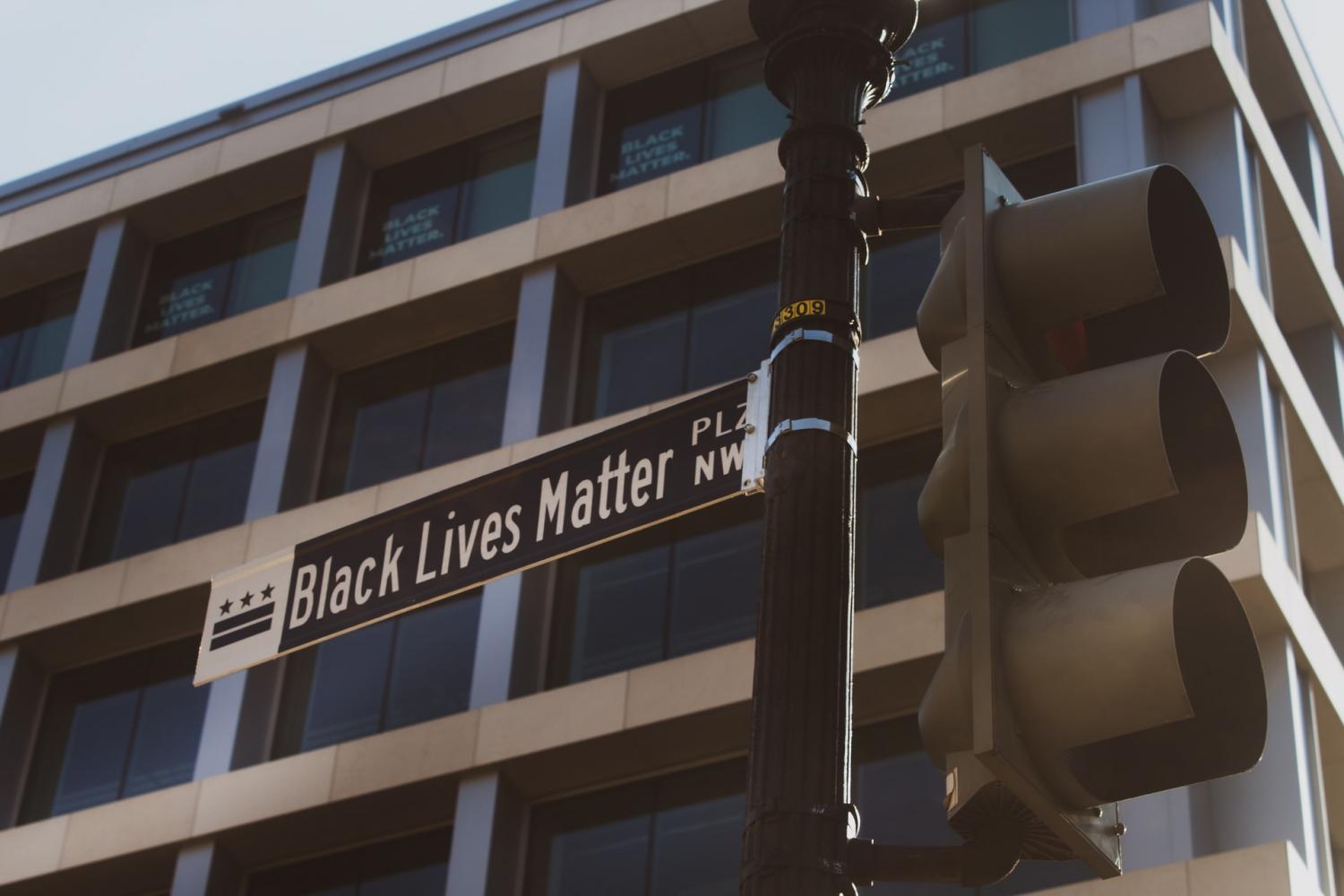
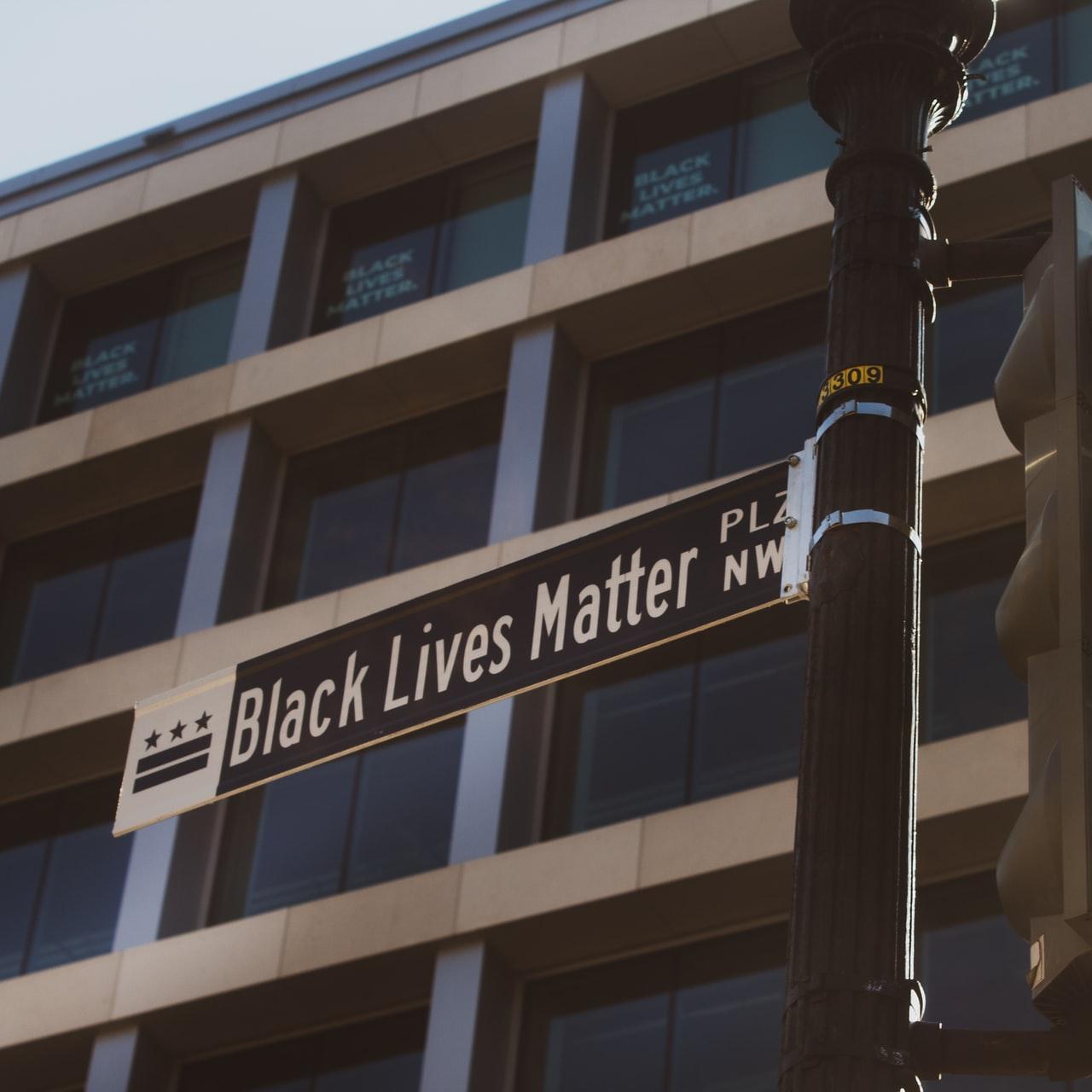
The murder of George Floyd last May forced a reckoning among leading U.S. companies that claim to support racial justice and equality. For all the talk of diversity and inclusion, institutional racism is baked into American society. Now the global money management firm BlackRock is raising the bar. The company has taken the rare step of committing to a third-party racial equity audit, with the aim of exposing its own role in systematic exclusion and division.
BlackRock and the Biden connection
Due to its size, BlackRock plays an influential role in the corporate social responsibility and ESG investing fields. The company is estimated to have $7.8 trillion in assets on its ledgers, making it the largest money management firm in the world.
BlackRock’s commitment to a racial equity audit startled some observers. It also puts considerable pressure on other firms to follow suit.
Editor's note: Be sure to subscribe to our Brands Taking Stands newsletter, which comes out every Wednesday.
However, the move was all but inevitable, considering BlackRock’s association with the Biden administration. President Joe Biden won his office in part on the strength of his campaign’s racial equity platform. When he tapped BlackRock executive Brian Deese to be his lead economic advisor as Director of the National Economic Council, he also put the company’s name and reputation front and center in the effort to tear down race-based institutional barriers in the U.S.
The National Economic Council keeps a low profile, but its position as an advisory group within the Executive Office of the President positions Deese to influence every aspect of the Biden administration’s racial equity goals.
More BlackRock connections at the Biden White House
Along with Deese, Biden also tapped another BlackRock executive and former Obama staffer, Wally Ademeyo, for an influential economic position as Deputy Secretary of the U.S. Treasury.
Treasury Secretary Janet Yellen welcomed Ademeyo in an official statement last week, taking note of his experience in national security and his work in a key Obama administration post impacting structural racism.
“Wally is also a tireless advocate for the working class. He helped build the Consumer Financial Protection Bureau from its foundations after the Great Recession,” Yellen said. “Those values – and that managerial experience – will be a tremendous asset to Treasury now as we continue implementing the American Rescue Plan.”
The social justice revolving door swings both ways
A third BlackRock executive and former Obama staffer to join the White House is Michael Pyle, as chief economic advisor to Vice President Kamala Harris.
All together, these three appointments have provided fresh opportunities to criticize the “revolving door” between business and government. However, the appointments also illustrate how the social responsibility focus of a younger generation of executives can influence both business and government.
Deese took up a climate action role at BlackRock, and his early resume includes stints at the Center for American Progress as well as the Carnegie Endowment for International Peace and the Center for Global Development.
Adeyemo was tapped to lead the Obama Foundation as its President in 2019, making him the head of a rapidly growing organization focused on community action.
“Since 2017, the Foundation has launched a series of programs that support leaders around the United States and the world who work to create positive change in their communities, including the Obama Foundation Fellows, Leaders, Scholars, and Community Leadership Corps, as well as the My Brother’s Keeper Alliance and Girls Opportunity Alliance initiatives,” the Foundation explains.
Pyle served as an outside advisor to the Harris campaign last year. In an interview with his home-state newspaper the Herald & Review last February, he articulated how institutionalized racism intertwines with the challenges prioritized by the Biden administration.
“The core of the (present) job is helping her [Harris] and advising her on how she and the president should navigate these four interlocking crises and challenges: the public health crisis, which is a significant part of the economic crisis, the climate crisis and the racial justice and equity challenge,” Pyle explained. “It’s…helping to make her priorities and views get represented in policy decisions that the administration makes, and helping to advise around those four core challenges.”
The union factor
Seen through the lens of the Biden administration’s focus on racial equity, the powerful role of BlackRock executives in shaping federal policy practically compels the firm to establish a leadership position on evaluating the corporation's role, if any, in perpetuating structural racism.
The Biden administration’s support for labor unions may also be a factor.
One leading driver of the racial equity audit movement is the investment firm CtW. The firm works with labor unions in the shareholder activism area, focusing on excessive executive pay as well as “irresponsible and unethical corporate behavior.”
“Founded in February 2006, the CtW Investment Group works with pension funds sponsored by unions affiliated with Change to Win, a federation of unions representing nearly five million members, to enhance long-term shareholder returns through active ownership,” CtW says. “Members of CtW affiliates participate in Taft-Hartley plans with over $250 billion in assets.”
“The long-term health of these pension plans, and the retirement security of the workers and families who rely upon them, are threatened by conflicts of interest on Wall Street and in the boardroom, a corporate backlash that seeks to weaken the accountability of executives to shareholders, and outright corporate fraud,” CtW adds.
What is a racial equity audit?
CtW’s initial focus has been on corporate transactions that benefit executives while harming shareholders. Motivated by last year’s George Floyd protests, CtW reached out to SEIU and targeted Bank of America, Wells Fargo, Citi, Goldman Sachs, Morgan Stanley, and JP Morgan for shareholder proposals requesting a racial equity audit.
As described by CtW, a racial equity audit would provide full transparency on corporate practices that perpetuate institutional racism.
“We believe that the finance industry has played a critical role in perpetuating unequal wealth distribution to communities of color,” explains CtW, adding that “The only way to effectively address racial injustice and economic inequality is careful study of how the industry’s products and services have contributed to this imbalance.”
BlackRock takes the racial equity spotlight
CtW has effectively called out financial institutions on their support for the Black Lives Matter movement, stating that "monetary pledges and verbal commitments alone are not sufficient to address the systemic racial disparities within our financial system.”
U.S. financial institutions are already facing renewed scrutiny under the pro-worker policies of the Biden administration. In that context, BlackRock’s commitment to a racial equity audit sends a message about the transparency pressures that financial institutions can expect over the next four years, and possibly well into the future.
BlackRock has also raised the profile of CtW and other drivers of the racial equity audit movement. Earlier this week, Bloomberg reporter Saijel Kishan took note of BlackRock’s commitment along with several other CtW actions that have resulted in racial equity agreements, some of which hinge on policies and programs that firms are already implementing.
If BlackRock is serious about leading the charge to dismantle institutional racism in the U.S., the company has a long, hard fight ahead.
The failed insurrection of January 6 fostered a state-based voter suppression movement that has steamrolled across the nation, exposing consequences of corporate acquiescence in government policy that supports white supremacy.
Business leaders are only just beginning to reckon with their own role in perpetuating deep-rooted racism that cuts to the very core of American democracy. The January 6 insurrection was a test that business leaders failed to pass. As a group, their response to the failed insurrection was weak, disorganized and fleeting, even though millions of PAC dollars have supported the Republican members of Congress who supported the insurrection.
Perhaps with some prodding by BlackRock and the Biden administration, others may find the courage to acknowledge their role in institutional racism, take steps to undo the damage, and build a more firm and lasting foundation for the future of American democracy.
Image credits: Julia Mouketo/Unsplash
The Fight for Racial Equity Cannot Overlook Technology
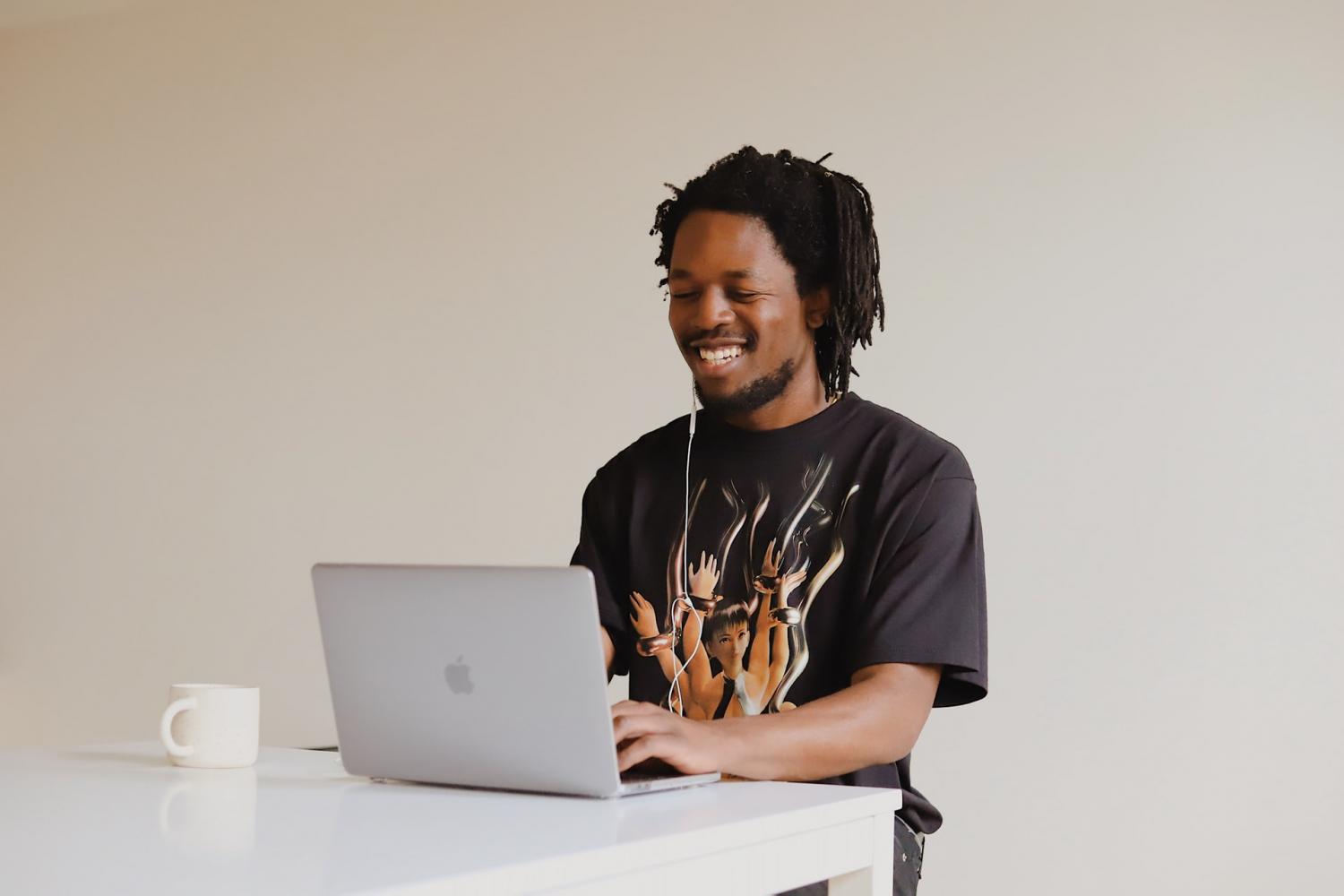
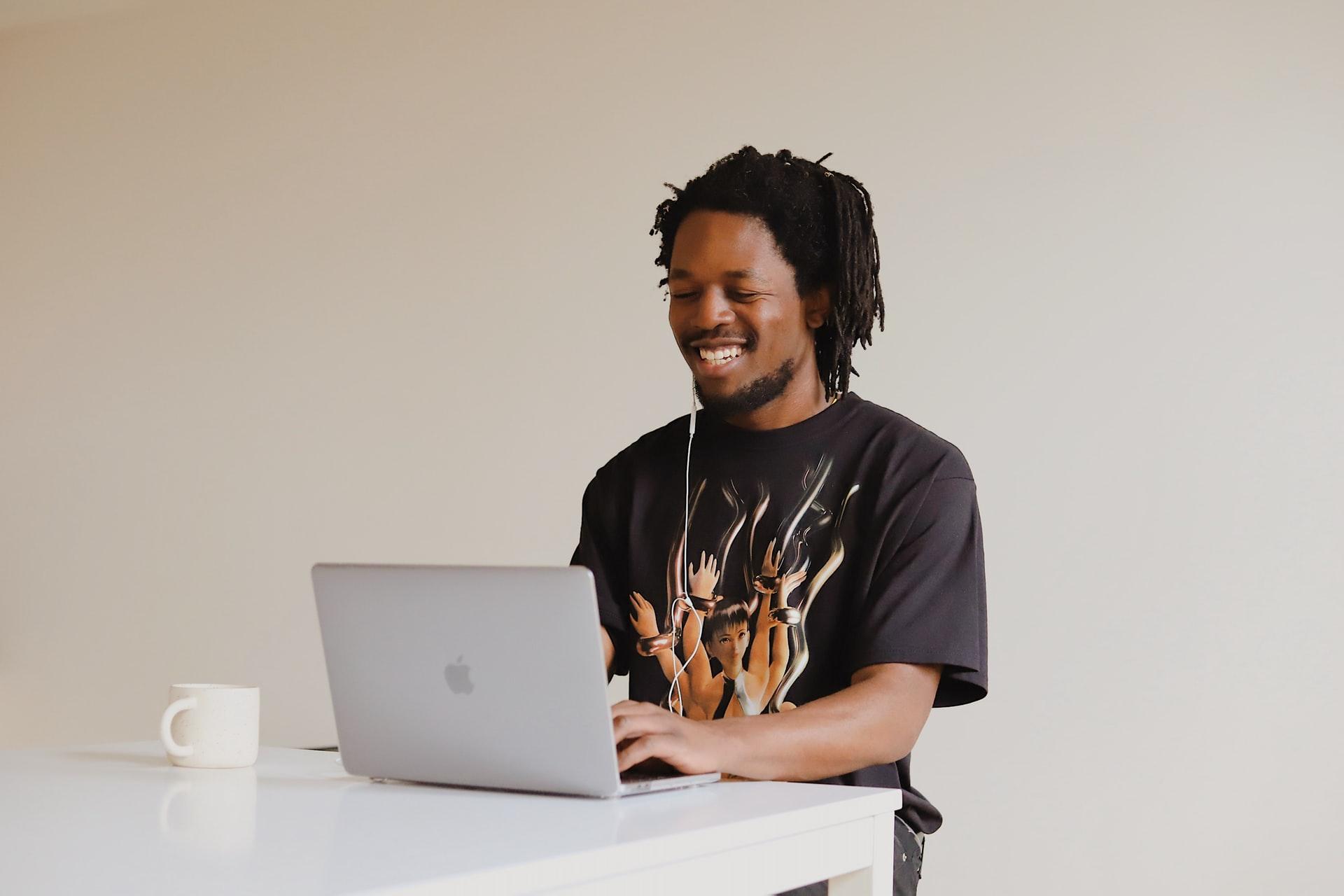
The legacy of racism in the U.S. is both systemic and structural. Here’s a 21st century example: A 2019 Pew Research Center study found that only about two-thirds of Black households had broadband internet access, compared to almost 80 percent of white families. Smartphones have helped narrow the gap a tad, but some things — like doing research, applying for jobs or emailing a doctor — are accomplished better on a laptop with a broadband connection.
To that end, CEO Action for Racial Equity (part of a larger group, CEO Action for Diversity and Inclusion) recently announced its commitment to close the digital divide by advocating for public policies that would narrow that gap. The coalition’s call to take action on this challenge comes 20 years after some observers predicted the advent of the internet and proliferation of home computers could lead to even more of a societal divide based on class, education and race.
But such policies are not just about access to digital resources, job boards or video tutorials. Lives are at stake, literally.
Technology, racial equity and the lack of healthcare access
As telehealth becomes even more mainstream, especially after this year-long global pandemic, we have yet another reminder of how COVID-19 has widened the societal gaps that have long existed. With that gap in technology access, added to the fact that Black citizens work disproportionately in jobs deemed as “essential,” then another problem could worsen — as in the fact that the life expectancy gap between Black and white people has increased over the past decade by 40 percent, from 3.6 years in 2010 to 5 years as of 2020.
Editor's note: Be sure to subscribe to our Brands Taking Stands newsletter, which comes out every Wednesday.
To that end, CEO Action for Racial Equity is also calling for policies that would allow for expanded access to telehealth services, made possible largely by more affordable internet services. “Instead of simply taking a look at pre-existing policies that we could align our support to, we are starting with an issues-first approach,” said Roz Brooks, the coalition’s policy lead, who is also the U.S. Public Policy Leader for PwC U.S.
A “do tank,” not a think tank
CEO Action for Diversity and Inclusion is a group of almost 2,000 global executives leading the world’s largest companies across 85-plus industries. Professionals who work with one of the group’s signatory companies have an opportunity to lend their efforts to CEO Action’s racial equity agenda. Depending on the company, these employees can work full-time with CEO Action for Racial Equity for a year or two while their companies continue to pay their salaries.
The opportunity to use their skills — whether they work in information technology, legal or marketing — to pursue social change while staying on the company payroll has clearly resonated with employees across many industries and companies. About 250 professionals are currently working with CEO Action for Racial Equity.
This setup results in an organization with the mentality of a startup, explained Roy Weathers, vice-chair of policy and societal engagement at PwC and CEO of CEO Action for Racial Equity, during an interview for 3BL Forum last month. Weathers described these professionals’ work as contributing to what is more of a “do tank” than a think tank.
Over the past year, CEO Action for Racial Equity has also spoken out in favor of police reform as well as against voter suppression efforts across the U.S.
Image credit: Good Faces/Unsplash
What's Crucial in Biden’s Infrastructure Bill: Water Investments
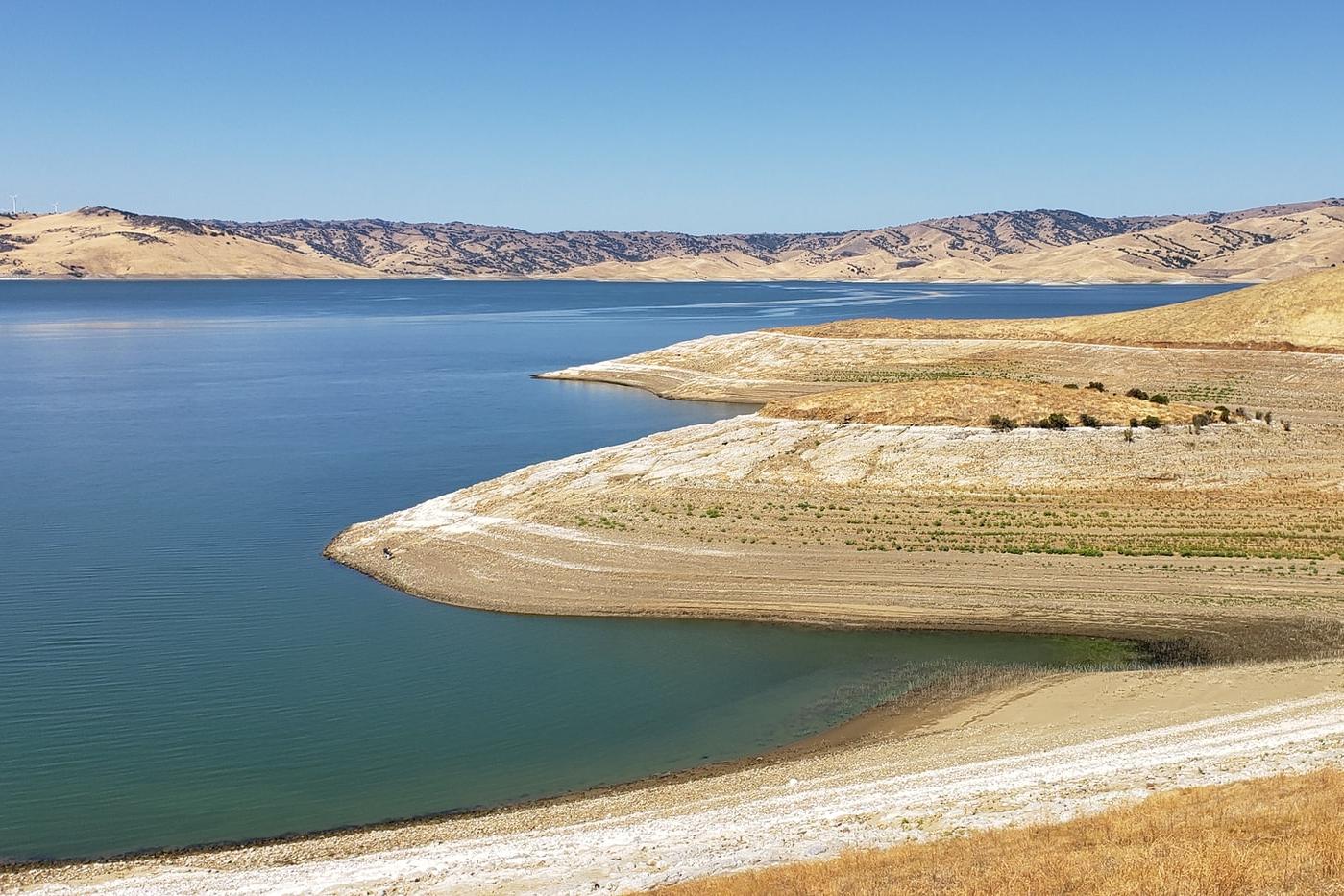
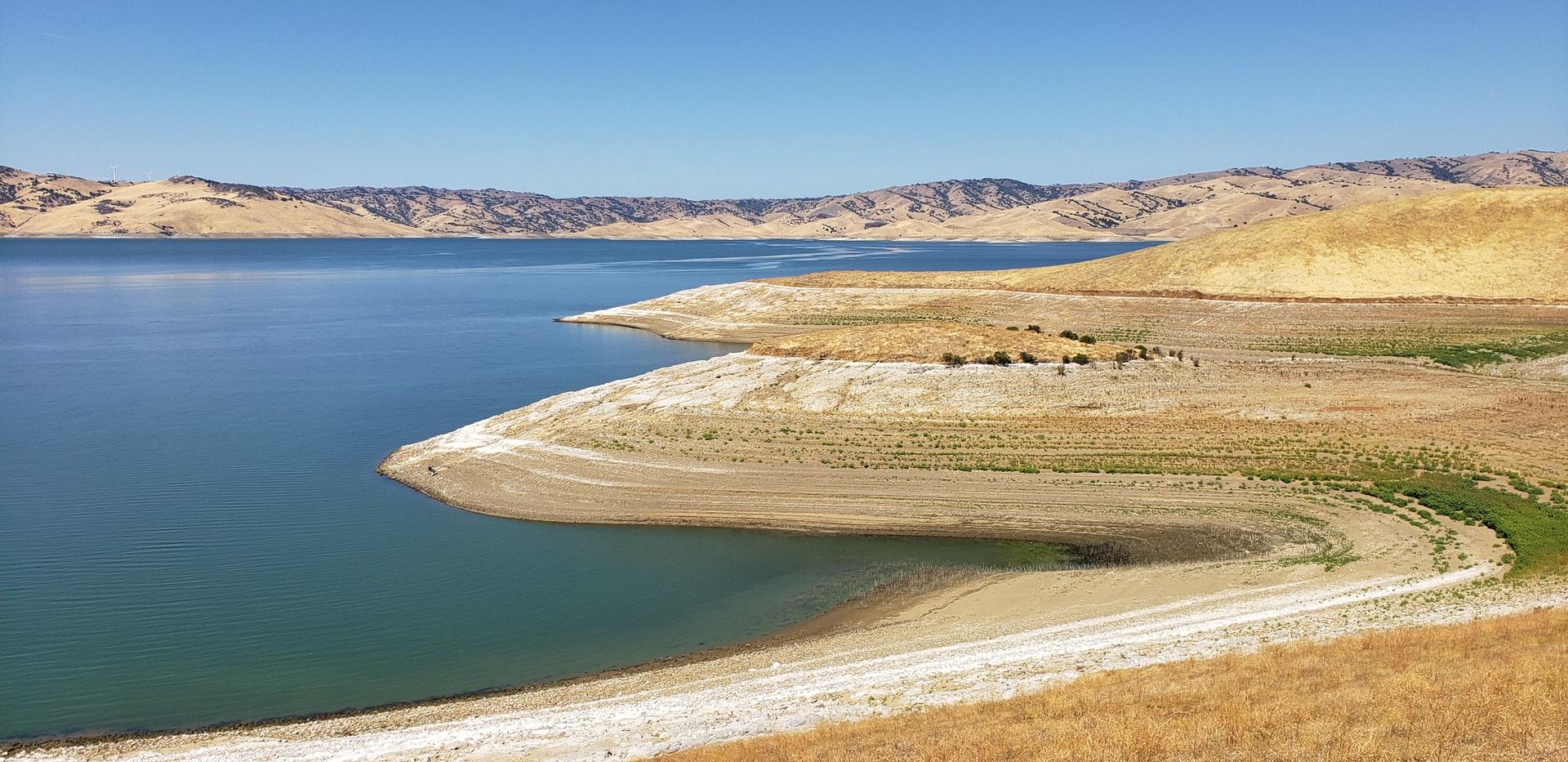
Photo: The San Luis Reservoir in Merced County, California. The reservoir and adjacent dam are among the water projects that could benefit from the Biden administration’s proposed infrastructure bill, according to recent press reports.
Last week, the White House announced the American Jobs Plan, a far-reaching, economy-wide infrastructure and jobs investment proposal. While the plan proposes $621 billion for transportation infrastructure — what people typically think of when they hear the word “infrastructure” — surprisingly, the bulk of the proposal would go to community infrastructure, as in sustainable housing, broadband access, electric infrastructure and, critically, water. The proposal comes not a moment too soon.
What’s in the American Jobs Plan?
The American Jobs Plan proposes $111 billion for water infrastructure, but that is spread out over several initiatives, including: $45 billion to eliminate all lead pipes and service lines; $10 billion to monitor and remediate drinking water contaminants and invest in small, rural water systems; $56 billion to upgrade and modernize America’s drinking water, wastewater, and stormwater systems; and $16 billion to plug oil and gas wells that contaminate local water and air quality. Additional funds earmarked in this infrastructure bill would address the effects of drought in the western U.S. along with investments in resilience solutions for areas disproportionately affected by climate change.
Comprehensive in nature, these solutions aim to tackle water from several different angles. Typically, policies tend to silo water quality and water quantity. Further, problems relating to climate change, such as nature-based infrastructure, tend to be put into another silo. Developing a plan that uses water as the connector makes sense as these issues often overlap.
While pipe materials or industrial processes may lead to poor quality, pressures on water quantity can also case degradation in the quality of water. For example, in Guanajuato, Mexico, the depletion of aquifers for a thirsty agricultural sector has led to toxic levels of arsenic in local drinking water supplies. California’s breadbasket, the Central Valley, has long endured similar problems. And restoring wetlands and watersheds, often viewed through the resilience lens, also helps protect water quantity.
Why an infrastructure bill now?
The American Society of Civil Engineers recently released its 2021 Report Card for America’s Infrastructure. As of now, water infrastructure report cards are not ones you’d want to take home to your parents.
Dams scored a “D.” According to the Association of State Dam Safety Officials, more than 2,300 dams fall under the category of deficient high-hazard-potential, meaning if these dams failed, the result would likely be a direct loss of human life and extensive property damage. The high number of dams in this category is due to lack of adequate investment.
Drinking Water scored a “C-.” While increased attention has led to better strategies and smarter investments, the system as a whole remains critically underfunded and beyond its planned life expectancy. A water main breaks every two minutes in the U.S., resulting in an estimated 6 billion gallons of treated water lost each day — which also results in compounded losses due to the energy-water nexus. It takes water to generate electricity (using fossil fuel- or nuclear-powered electricity) and treating moving water requires an extensive amount of electricity. The high volume of water loss flushes money down the drain and generates unnecessary associated emissions.
Stormwater scored a “D.” With climate change leading to more economic losses due to flooding throughout the country, the state of stormwater infrastructure is a serious concern. While stormwater infrastructure runs the gamut extensive concrete storm sewers to flood control reservoirs, urban centers in particular face challenges with the rising costs of infrastructure upgrades, particularly after suffering repeated flooding events.
Wastewater scored a “D+." Like drinking water infrastructure, much of the wastewater infrastructure is old and underfunded. In fact, 15 percent of the country’s 16,000 wastewater treatment plants exceed their design capacities. Further, in some urban areas, extreme weather can stress the system. As an example, Austin Water has issues boil water notices twice in the last three years - once after catastrophic flooding and again after this year’s ice storm.
In addition, events in recent years have raised alarm about the toxic levels of chemicals in drinking water, most recently in Jackson, Mississippi. And while lead in water makes the news, especially from places like Flint, Michigan, other chemicals threaten our water supplies and public health.
For example, PFAS (per- and polyfluoroalkyl substances), man-made chemicals used in many everyday consumer goods like nonstick cookware as well as water- and stain-resistant clothing and furniture, are extremely harmful in low doses and do not break down in our bodies. The American Jobs Plan specifically targets money to monitor and remediate PFAS in our water systems, and Michael Regan, the new head of the U.S. Environmental Protection Program, called out the necessity of addressing them during his confirmation hearing in the Senate. To further drive the point home, a nine-month study conducted by Consumer Reports and The Guardian found that 118 of 120 samples taken had levels exceeding Consumer Reports’ recommended maximum for PFAS, arsenic and lead.
What’s at stake in the infrastructure bill
America’s water infrastructure has been at a critical level for some time, as systems built in the first half of the 20th century have already started to age, and now they confront added pressures from population growth in urban areas and accelerating climate change. A major push, like the White House’s infrastructure bill, could jumpstart investment across the broader water sector. Further, by tackling the problems facing the sector with a broader stroke and creating solutions strategically, investors and policymakers could uncover even more efficiencies. Some have called this plan a “moonshot” for water. As our most critical resource, water deserves nothing less.
Image credit: Fredrick Lee/Unsplash
FedEx On the Road to Become Carbon-Neutral by 2040
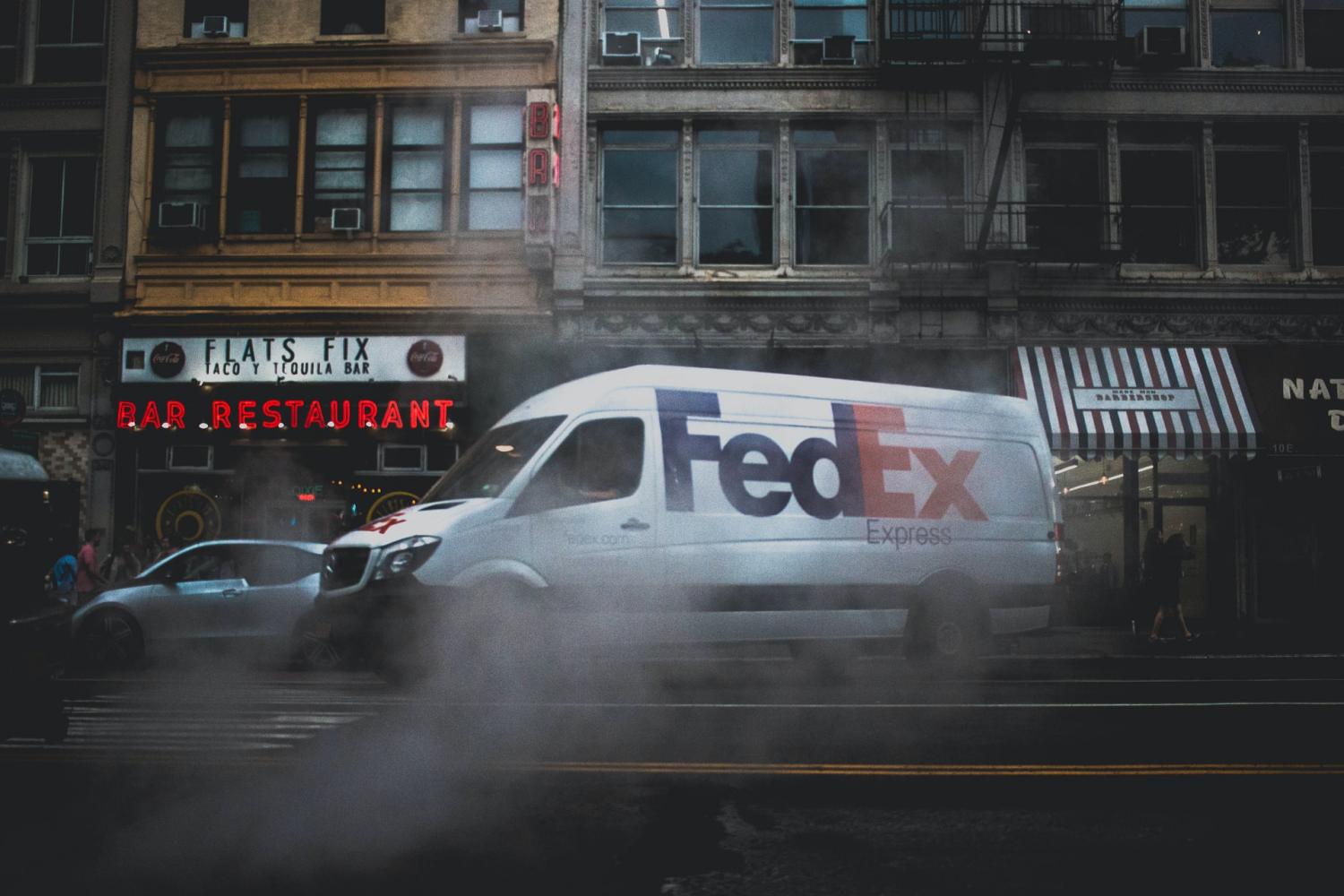
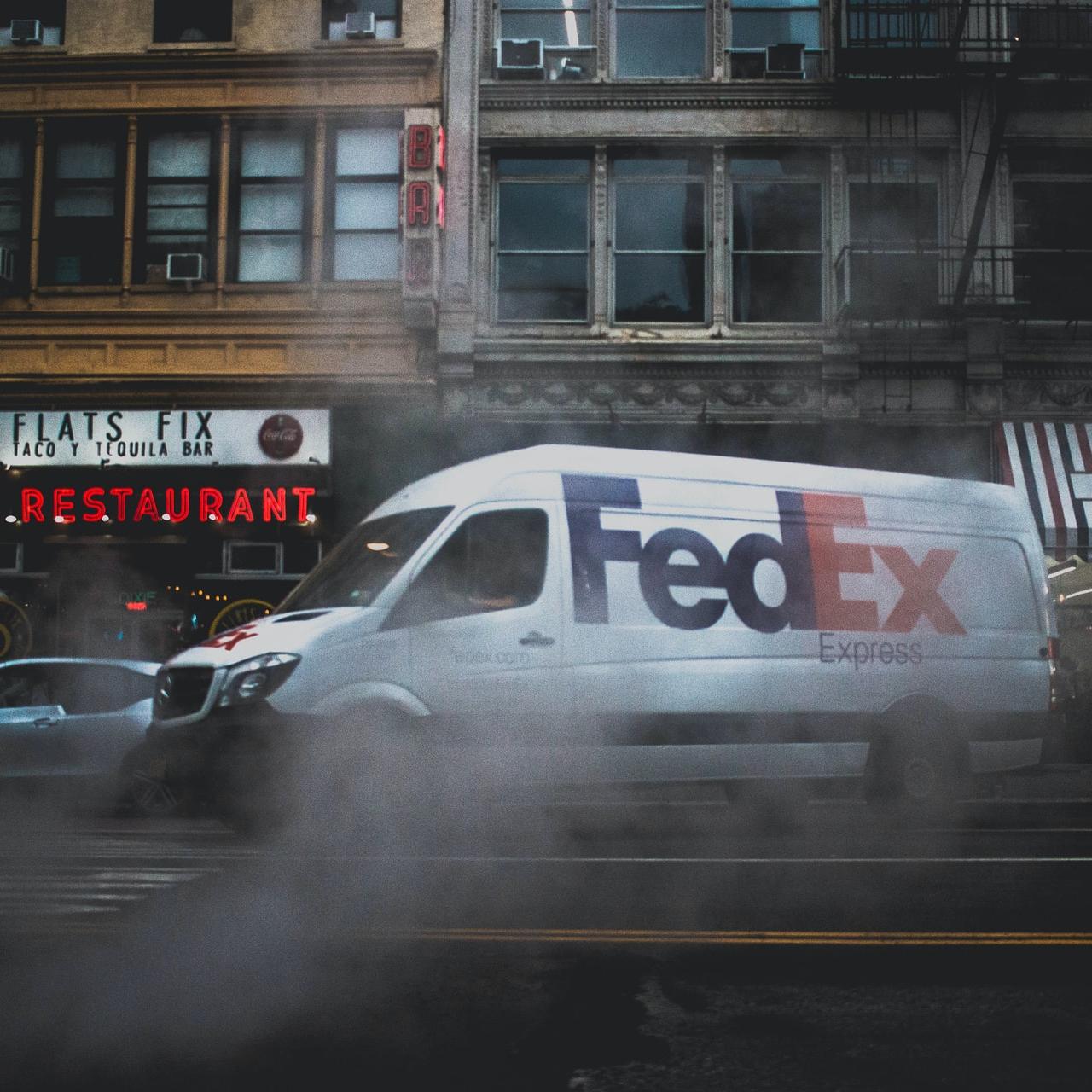
FedEx recently announced it will be carbon-neutral by 2040, nearly ten years earlier than what is required by the Paris climate accords. This initiative is impressive given FedEx’s enormous transportation footprint with 84,000 vehicles globally. Also, FedEx plans to largely focus on emissions reductions and not offsets. The company pledges to invest $2 billion towards the low-carbon transition for electrifying its enormous fleet, sustainable energy and carbon sequestration.
More than 50 companies have vowed to be carbon-neutral by 2040, and FedEx is one of the latest to join the list due to concern by shareholders, employees and consumers about climate change.
Electric vehicles a key to a carbon-neutral FedEx
By 2040, FedEx plans to fully transition its global parcel pickup and delivery fleet to zero-emissions and electric vehicles (EVs). This plan follows other timelines in the works, such as California’s announcement to phase out the sale of gasoline-powered cars and dramatically reduce fossil fuel use by 2035.
GM says it is also creating an electric future and is looking to capture the market opportunity of this transition. The automaker plans to phase out gas and diesel-powered vehicles by 2035. One long-term option for Fedex could be the scaling up of GM’s BrightDrop, which offers electric vehicles for commercial delivery companies.
“Our need for reliable, sustainable transportation has never been more important,” said FedEx Express executive Richard Smith in a public statement. "BrightDrop is a perfect example of the innovations we are adopting to transform our company as time-definite express transportation continues to grow. With this new suite of products, we will help improve the safety, security and timeliness of FedEx Express deliveries while reducing our environmental impact and protecting the well-being of our couriers."
Fully ‘renewable’ by 2040?
FedEx’s carbon-neutral plan will kick into gear quickly, but critics are concerned it isn’t fast enough. By 2025, EVs will account for at least half of FedEx’s global fleet purchases and 100 percent of fleet purchases by 2040. Although there are plans to ramp up the use of EVs, older vehicles could remain on the road for years, spewing pollution.
Also, EVs may not be running on fully renewable sources by 2040 and could still rely indirectly on natural gas. Although EVs may not directly produce emissions, the power plants required to produce the electricity could depend on fossil fuels such as natural gas, the burning of which results in the emitting of greenhouse gases.
More efficient aircraft
FedEx operates the largest global air fleet, with more than 650 aircraft. Its carbon-neutral plan involves investing in alternative aviation fuels and boost efficiency.
FedEx’s 2040 goal to be carbon-neutral compliments an earlier sustainability commitment to reduce aircraft emissions 30 percent by 2020. The company has begun using Boeing 777F aircraft, which use 18 percent less fuel compared to MD11 freighters yet have greater payload capacity.
Sustainable energy
FedEx plans to continue making its 5,000 facilities eco-friendly through increased efficiency and the expanded use of renewable energy. Some of this plan is already underway: One regional headquarters for FedEx Express is housed in a groundbreaking building in the Netherlands. Not only is the building carbon-neutral, but it’s actually energy positive. It has a heat and power plant fueled by recycled biological waste that sends heat to nearby buildings. Further, there are more than 20 FedEx Express buildings spanning the globe that are LEED- Platinum certified.
Although this is an impressive start, FedEx has a long way to go when considering the scale and reach of its facilities and the need to scale up renewable energy production to power its fleet.
Nature-based carbon sequestration
A $100 million gift from FedEx will help fund the Yale Center for Natural Carbon Capture to support and refine natural carbon sequestration solutions. The goal of the project is to enhance the Earth’s ability to store carbon.
“Researchers will develop methods that build on natural carbon storage systems, including biological ecosystems and the geological carbon cycle, improving, where possible, how quickly carbon can be absorbed, how much can be contained and how long it can be stored,” FedEx said in a statement.
FedEx has already made some good strides towards a more sustainable future, and the recent announcement to be carbon-neutral by 2040 shows a commitment for the long haul. “While we’ve made great strides in reducing our environmental impact, we have to do more,” says Chief sustainability officer, Mitch Jackson. “The long-term health of our industry is directly linked to the health of the planet, but this effort is about more than the bottom line – it’s the right thing to do.”
Report: Food Brands Are Failing on Animal Welfare


By some accounts, the past decade has witnessed a growth in awareness of animal welfare and companies responding by striving to make their supply chains more humane. Announcements such as ending the use of gestation crates, using more or only cage-free eggs and telling suppliers to stop injecting livestock with antibiotics are among the shifts we have seen in recent years.
But according to a new report that World Animal Protection and Compassion in World Farming recently issued, the world’s largest food companies’ deeds on the animal welfare front have not matched their words.
Overall, progress on animal welfare is occurring; but frankly, that bar was fairly low to begin with.
The Business Benchmark on Farm Animal Welfare (BBFAW) Report ranks companies in six tiers: Think of Tier One akin to receiving an “A” grade, the fifth tier as an F, and the final tier as the student who never showed up to class and scored an incomplete. Only four companies, all of them based in the United Kingdom, made it into the BBFAW’s top tier: Cranswick, Marks & Spencer, Noble Foods and Waitrose.
The rest of the list is a who’s who of leading food brands, and their scores don’t put them in the brightest of lights, even if a few managed to jump up a BBFAW tier or so.
We can’t know your animal welfare score if you’re not reporting
For one thing, companies generally are under-reporting their animal welfare performance. “Whilst 79 percent of companies have published formal improvement objectives for farm animal welfare (75 percent in 2019), there is a gap in companies’ disclosure on how these commitments are leading to improved welfare performance on the ground,” say the report’s authors.
In addition, while the performance of animal welfare at retailers, wholesalers and the food service sector has remained relatively static over the past few years, the overall scores of food producers and manufactures has actually improved a few notches – a trend seen for the first time within this annual report.
Progress, but little purpose and far from any perfection
Overall, progress on some of the cruelest practices within the global food industry has improved but is still fitful. For example, the use of cage-free eggs has become mainstream, with a majority of companies indicating that they reveal the percentage of hens within their supply chains that aren’t kept in close confinement. Nevertheless, only about one-quarter of all the companies surveyed in this report have disclosed that a majority their hens are kept free of close confinement.
Meanwhile, companies overall appear skittish when it comes to discussing the darker side of animal welfare across their supply chains. Take beak trimming: Only one in eight of the 150 food companies studied for this report disclosed the percentage of egg-laying hens subjected to such treatment. And frankly, if a company is shy about disclosing, they most likely aren’t performing on a trajectory acceptable to many of their stakeholders.
Before the pandemic, investors were increasingly urging companies to eliminate animal cruelty from their supply chains, generally from a reputational standpoint. The global pandemic largely sidetracked such conversations, but the role many U.S. meat companies had in spreading the virus – and their lack of accountability – offered a reminder that such investor activism won’t be dormant for long. In addition, consumers have increasingly been concerned about animal cruelty; as the world reopens; there’s no such reason such sentiment has gone away.
Image credit: Laura Anderson/Unsplash
MLB Protects Brand Reputation, Claps Back at Georgia’s Voter Suppression Law


Photo: Coors Field in Denver, Colorado, one city reportedly under consideration to host the 2021 All-Star Game after MLB pulled the game out of Atlanta in the wake of what critics say is a law that increases voter suppression in the state of Georgia.
The 2021 Major League Baseball All-Star Game was scheduled to be played in Atlanta, Georgia on July 13 this year. It was supposed to feature a celebration of the life of Black baseball legend, entrepreneur and civil rights advocate Henry Aaron, who passed away in January at age 86. Instead, the game will be played in another state, and it has become a powerful flashpoint in the fight against voter suppression nationwide.
Henry Aaron, baseball star and civil rights hero
Henry Louis “Hank” Aaron is best known in sports circles for his stellar career with the Atlanta Braves. He is also widely recognized for his longtime support for civil rights organizations.
Aaron’s activism was informed by his own life story. His childhood in Mobile, Alabama was punctuated by the routine of hiding under his bed whenever the Ku Klux Klan marched through his segregated neighborhood. He began his baseball career in the Negro Leagues and Minor Leagues under Jim Crow conditions, and he joined the Braves in 1954, when overt, state-sanctioned segregation was still the norm.

“Aaron continued to endure racism throughout the entirety of his baseball career, which lasted from 1954 to 1976,” recounted CBS sports reporter Katherine Acquavella last January.
“During his journey to passing Babe Ruth in all-time home runs, Aaron received relentless hate mail and threats to his life, solely because of his race and the fact that he was breaking a white man's record,” Acquavella wrote. “He was forced to depart via the back exits of ballparks for the sake of safety, he needed a police escort with him most of the time and his children were subject to strict rules and limitations due to kidnapping threats.”
Aaron eventually made his home in Atlanta and became one of the city’s most high-profile and successful entrepreneurs, providing all the more reason for MLB to celebrate the life of this extraordinary man at one of the sporting world’s most high profile events.
Voter suppression a slap in the face for MLB
The All-Star Game was already scheduled for Atlanta when Aaron passed away. The coincidence of his death set the stage for what should have been a powerful, poignant remembrance. It was also an opportunity for MLB to raise its diversity profile, reaffirm its support for the Black Lives Matter Movement, and shake free of its segregationist past once and for all.
Instead, MLB got a cold, hard slap in the face. Earlier this month, the Republican-controlled state legislature in Georgia passed, and Republican Governor Brian Kemp signed, a new voter suppression law that has quickly become the leading symbol of Republican efforts to disenfranchise Black voters across the country.
In the wake of voter suppression, a brand reputation at stake
By March 26, the Major League Baseball Players Association indicated that its members were open to moving the All Star Game out of Georgia.
The promotion of the 2021 All Star Game as a homage to Hank Aaron made it all but impossible to consider anything else. Holding the game as planned would have forced MLB to promote its brand to audiences around the world as clueless, hypocritical, disrespectful and cruel all at once.
Adding more fuel to the fire, a coalition of top Black executives issued a public letter last week that casts the voter suppression bills as a continuation of white supremacist violence throughout the civil rights movement. The coalition urged corporate America to “marshal its collective influence to ensure fairness and equity for all.”
Editor's note: Be sure to subscribe to our Brands Taking Stands newsletter, which comes out every Wednesday.
MLB ultimately decided that protecting its brand reputation was the only option. On April 2, the official MLB.com website carried word that the 2021 All Star game is moving out of Georgia.
“The decision [to move the game] comes a little more than a week after the passage of S.B. 202, a Georgia law that President Joe Biden criticized earlier this week, saying that it will restrict voting access for residents of the state,” reads an article posted on MLB.com on Friday.
The article cites MLB Commissioner Rob Manfred, who said that “Major League Baseball fundamentally supports voting rights for all Americans and opposes restrictions to the ballot box.”
Manfred also observed that last year MLB became the first professional sports organization to join the non-partisan Civic Alliance, an organization promoting equal access to the ballot box that currently lists 1,119 business members with a reach of almost 5,200,000 employees.
The decision most likely reflects another significant development that occurred earlier this year, when basketball star and high profile voting rights advocate LeBron James became the first Black person to be a part-owner of the Boston Red Sox, and one of the very few Black owners in MLB history, by virtue of his newly acquired stake in the team’s parent company Fenway Sports Group.
The power of the corporate voice
Chaffing at any criticism describing their efforts as voter suppression, Republicans in Georgia have been quick to frame the issue as a demonstration of harmful anti-business policies promoted by Democrats.
Somewhat ironically, the Atlanta Braves organization provided a tone-deaf but on-point summation of that argument.
“Unfortunately, businesses, employees and fans in Georgia are the victims of this decision,” the Braves wrote in an official statement.
That misses the point. By nature, the purpose of a boycott is to spark a public discussion of harm that is already occurring.
The history of the civil rights movement is itself peppered with the effective use of boycotts, most famously during the Montgomery, Alabama bus boycott, which took place during the years in which Aaron was just beginning his career with the Braves, from 1955 to 1956.
Voting rights advocates have not fallen for the trap. While expressing disappointment over the economic fallout, they have adopted a message that supports the MLB decision as a flexing of business empowerment muscle and an expression of civic responsibility.
Last week Georgia voting rights activist Stacey Abrams provided a ringing endorsement of the MLB decision and defended the responsibility of corporate citizens to act.
“Our corporate community must get off the sidelines as full partners in their fight,” Abrams wrote in a statement.
U.S. Senator Reverend Raphael Warnock (D-Georgia) struck a similar note, stating that “businesses and organizations have great power in their voices and ability to push for change.”
“It is not the people of Georgia or the workers of Georgia who crafted this law, it is politicians seeking to retain power at the expense of Georgians’ voices,” he added.
U.S. Senator Jon Ossoff (D-Georgia) also echoed the theme, while pinning the blame for economic pain on the shoulders of Republican office holders.
“The leadership of Georgia’s Republican Party is out of control and Georgia is hemorrhaging business and jobs because of their disastrous Jim Crow voting law,” Ossoff wrote.
When boycotts work
Consumer boycotts are notoriously fickle, and they rarely succeed. The MLB decision, however, falls into the category of a corporate boycott. These can be highly effective, and the business of professional sports has wielded its influence to great effect in recent years.
In 2018, the National Basketball Association moved its All-Star Game from Charlotte to New Orleans, in protest of North Carolina’s notorious anti-LGBTQ “bathroom bill.” Significant parts of the law were overturned in court just one year later.
In March 1991, the National Football League moved its previously scheduled 1993 Super Bowl out of Arizona after the voters turned down a measure to make Martin Luther King Jr. Day a paid holiday. The issue came up for another vote in 1992, and this time it passed.
Supporting such corporate activism is an emerging layer of employee activism, as top athletes leverage their media access to push owners into action.
One especially interesting development occurred in February, when after months of attacking the Black Lives Matter movement, former U.S. Senator Kelly Loeffler (R-Georgia) was forced to sell her stake in the Atlanta Dream franchise of the Women’s National Basketball Association. The sale took place after months of lobbying by players on the team, many of whom are Black.
A second chance to get it right on voting rights
Corporate citizens across the nation dropped the ball after the failed insurrection of January 6. The unprecedented effort to overturn the 2020 election by force drew criticism from a few corporate leaders, who withdrew financial backing for Republican members of Congress who voted to overturn the election.
However, some of those who initially pledged to defund insurrection-supporting members of Congress later opened the door to PAC donations again. Others never really targeted insurrection supporters at all, but simply pledged to review corporate giving across the board.
By March, the corporate movement to defund insurrectionism had withered on the vine, even as a Republican-led voter suppression movement took hold in state legislatures across the nation. In effect, Republican office holders are seeking to accomplish by law what the insurrectionists failed to achieve by violence.
Now MLB has provided corporate citizens with a second chance to lead on voting rights.
The decision to move the All-Star Game has had some impact. Over the weekend, HP, Dow, Salesforce, Viacom and Under Armour joined almost 200 companies in a statement denouncing voter suppression laws in Georgia and other states.
That is all well and good, but the state-by-state, piecemeal protection of voting rights is not sufficient. The end game will take place in the U.S. Senate, where the landmark federal voter protection bill H.R. 1 hangs in the balance. Its fate depends on the ability of a razor slim Democratic majority to abolish or revise the Senate filibuster, which has been described as a lasting “monument to white supremacy.”
If corporate leaders truly are serious about stopping voter suppression efforts while protecting the voting rights of their employees, customers and clients this time, they should be prepared to push the issue to the limit, lobby for reform of the filibuster, and direct their PAC dollars to U.S. Senators and candidates who support H.R. 1.
Image credit: Jakob Rosen/Unsplash